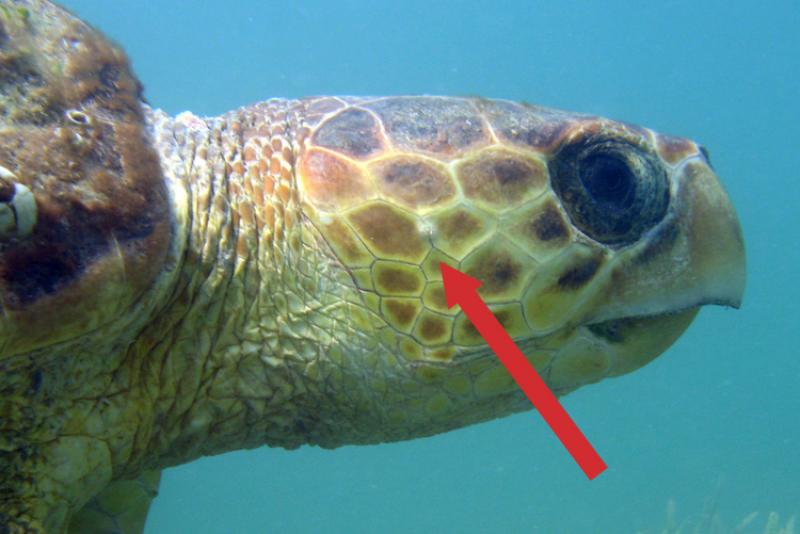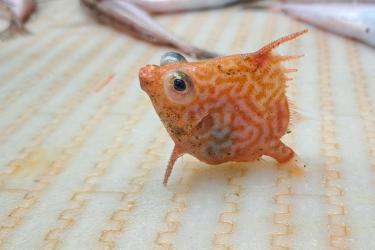Historically, due to unsuccessful early studies and lack of a visible ear, sea turtles were often thought to be deaf or to have very poor hearing capabilities. We know now that sea turtles have an internal ear on each side of their head that is covered by a thick layer of scales, skin, and fat. It is thought to assist underwater sounds in reaching the inner ear.
Sound in the Marine Environment
Sound can be heard in the murkiest water where light cannot be detected. Sound can travel hundreds or even thousands of miles underwater—far greater distances than light and odor, which can travel only hundreds of feet. Many marine animals rely on sound to navigate, locate prey, avoid predators, communicate, and maintain general environmental awareness.
The marine soundscape is composed of sounds produced by many natural and human-generated sources. Natural sources of sound include rain, wind, waves, earthquakes, and animals (for example, fish choruses and whale calls). Human sources of sound include vessel activity (small boats to large ships), surveys for oil and gas, pile driving during construction projects, and military and research sonar.
During the last century, human activities that generate ocean noise have increased. Depending on the source, duration, and location, human-caused sound can affect animals by:
- Causing hearing loss
- Causing a stress response
- Forcing animals to move from their preferred habitat or divert from their migratory path
- Disrupting normal behaviors
These impacts may be immediate and severe, or they may accumulate over time.
All six species of sea turtles in the United States are listed and protected under the Endangered Species Act. However, our knowledge of the impacts of sound on sea turtles lags behind other marine animals such as whales and dolphins. Understanding how sea turtles perceive and respond to sound can help us to better assess how they might be impacted by human-generated noise, and assist in developing methods to reduce these potential impacts.
Studying Sea Turtle Hearing
Sea turtle hearing can be measured by recording the electrical signals sent from the ear to the brain when the ear detects a sound. This physiological technique is a non-invasive, quick method for determining hearing and is the same technique used to measure hearing in human infants. Additionally, it has been safely used to measure the hearing of many other marine animals including marine mammals, fish, and invertebrates.
Sea turtle ears are adapted to hearing underwater, and they are more sensitive to underwater sounds than sounds above water sounds. Recent research indicates that sea turtles are most sensitive to low-frequency sounds below 1,000 Hz, such as the sounds of crashing waves or vessel motors. The sea turtle hearing range is narrow compared to marine mammals, but similar to most species of fish. As low-frequency sounds travel the farthest and are the most prevalent in the marine environment, sea turtles hear many of the natural sounds in their marine habitats. Their hearing range also overlaps with many sounds produced by human activities such as commercial shipping, pile driving, seismic surveys, and low-frequency sonar.
Data gaps in our understanding of sea turtle hearing still exist. NOAA Fisheries is working with partners to better understand how sea turtles perceive and respond to sound in their environment to assess and reduce the potential impacts of noise on sea turtles.





